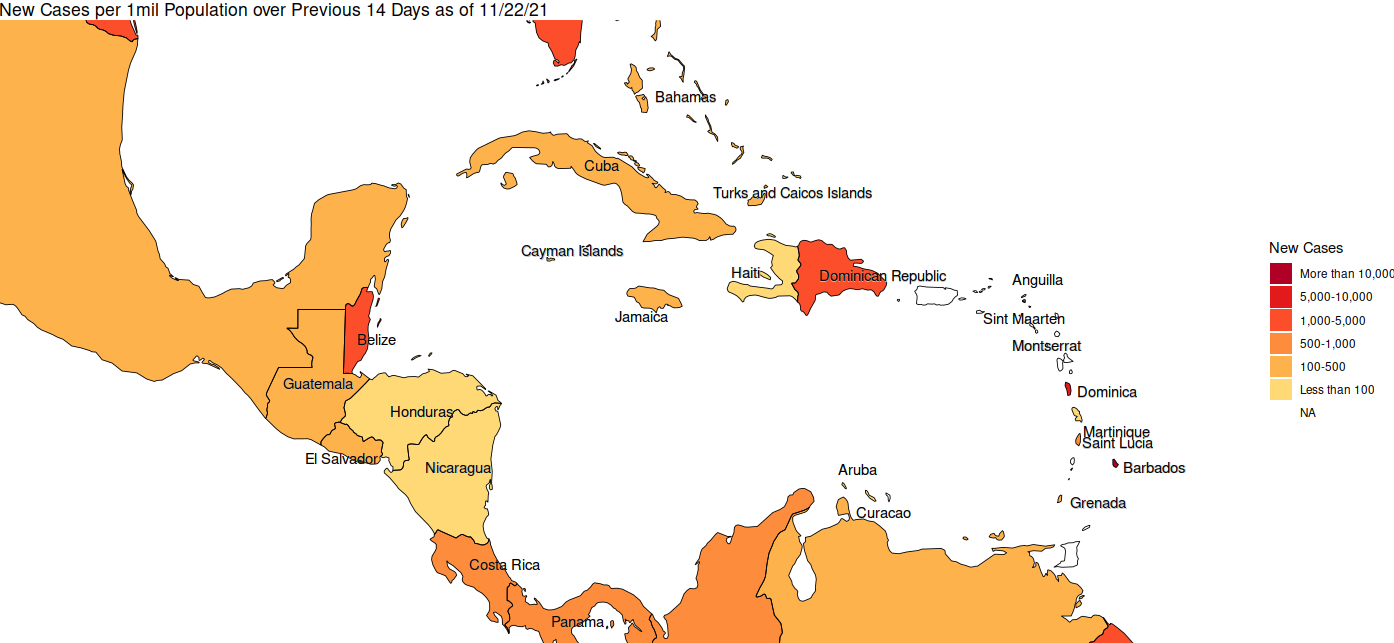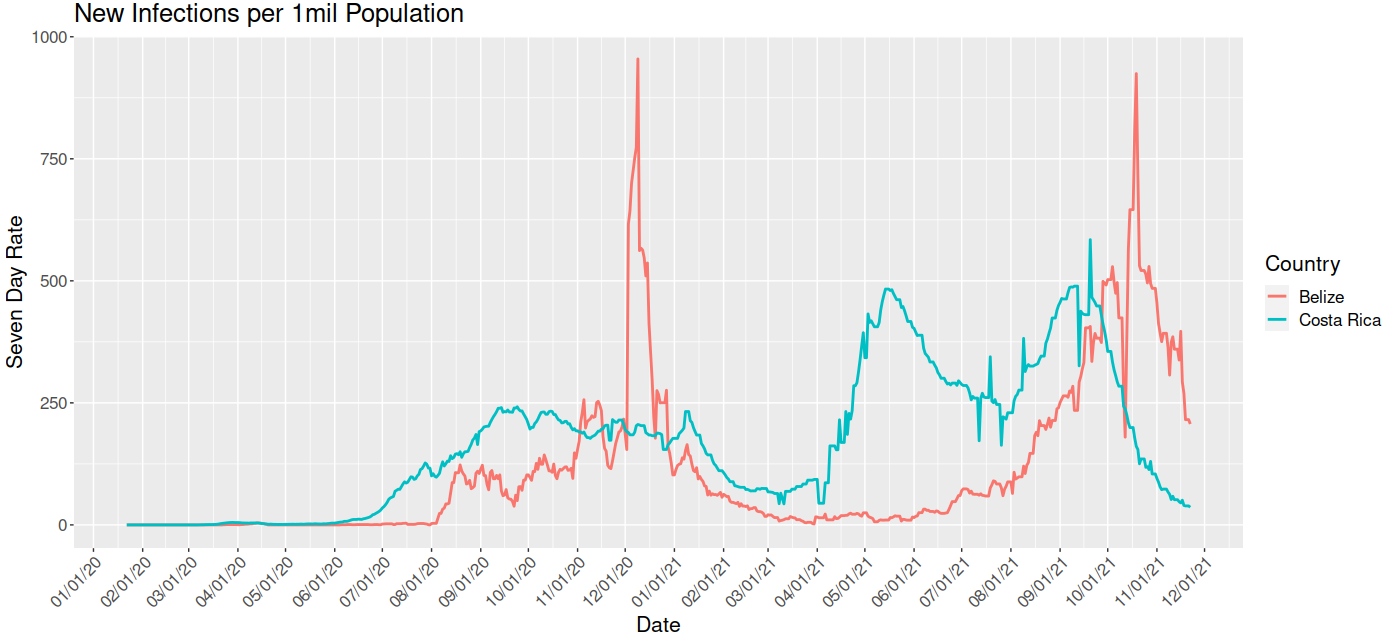So you want to get away sometime this winter? If so, you’ve probably been somewhat anxious about choosing a safe destination. One of the unfortunate aspects of COVID is that the infection rate in a given area may change rapidly dependent on local policies, local attitudes, and other factors. Therefore it can be difficult to plan ahead for safe travel. While there are a number of websites which can give aggregate data on COVID infection rates, these sites often lack context for the reader, and so it may be difficult to tell what to make of all the information.
Starting this week, we’re going to try to provide this to you on a limited basis. Using the John’s Hopkins University’s publicly available data as well as some statistical wizardry, we’ll present to you rate data, how it’s changing, and maybe even why when we can find such information. Given that the course of the most common strain of COVID (Delta) is about 10 days to 2 weeks, we’ll go with the 14 day new infection rate per million of population as our stat. This is also used by a number of countries to gauge which other countries are on their “green lists” and who can or cannot enter without quarantining. If your country of origin is NOT on the green list of your destination, you may need to quarantine even if you are vaccinated or test COVID free.
But first, here’s a quick look around the world.

Some countries are likely to be under reporting for various reasons including inadequate healthcare infrastructure, but also possibly hiding data to look better. There’s a great piece on how this sort of thing led to the Spanish Flu being called what it is, despite having probably originated in Kansas. In any event, it’s clear that the so-called “First World” is not doing so well, despite widespread availability of vaccines.
Europe, a popular destination pre-COVID, is doing worst of all right now:

Particularly hard hit are Austria and the Netherlands. My own favorite country, Estonia, is sadly not doing so hot either. As of today, there were 821 new cases in a population of 1.3 million. Austria is mandating vaccinations which may not go over so well right now, but which if it succeeds, may help to reopen the country fully by spring 2022. The Guardian summarizes other measures being taken in Europe right now. In short, Europe probably shouldn’t be on your short list of travel destinations unless you have had your booster, you hold a European passport, and you have an urgent reason to go.
As you may have seen from our prior posts, we’ve been focusing on the Caribbean, specifically Belize in our efforts due to the relatively low rates of infection there compared to elsewhere, but also due to the existence of a Gold Star Hotel standard to try to keep guests (and locals) safe from contracting COVID. Here’s what the Caribbean looks like now:

Unfortunately, Belize was on the upswing in cases until very recently. Some other Central American countries are lower, but some of these have travel advisories out which are unrelated to COVID.

Let’s take a look at Belize compared to Costa Rica. Both Belize and Costa Rica have a number of festivals and gatherings in the summer and early fall which may have contributed to the increase in COVID cases. While such festivals had the potential to bring large groups of unrelated people together, it’s not clear how many of these were still held and how many were cancelled. Nonetheless, both Belize and Costa Rica had increasing numbers of international arrivals throughout the year compared to 2020.
My own theory is that schools have a great deal to do with these waves. This is supported, for example, by research done on this very issue here in the US and published in the Proceedings of the National Academy of Sciences. In Costa Rica, the school year is very different from that in most other places including Belize. School starts in mid to late February and runs till late June, and then another term starts in early to mid July and runs until late November. Anectdotally, these periods do line up with the increases seen in the above graph. In Belize, school started this year on August 19th. Although cases were rising before this, the number of cases increase more dramatically afterwards.
But although school is still in session, both countries have seen a drop in cases lately. My bet is that it’s the vaccines that are doing this. Costa Rica is slightly ahead of Belize in its vaccination rate such that the single dose versus full vaccination rates are 75.7% / 60.2% for Costa Rica, and 58.2% / 48.9% for Belize. Why is Costa Rica ahead? For whatever reason, their rate of vaccination went up sharply on August 16, 2021, whereas in Belize, this increase started about a month later in mid-September. Three to four weeks later, the rates in both countries start falling as might be expected if large amounts of people are getting vaccinated.
Regardless of the reason, the rates are coming down, and that means that when combined with the Gold Star Hotel standards in Belize and the vaccine mandates in Costa Rica, these tropical destinations may be your best bets for winter getaways.